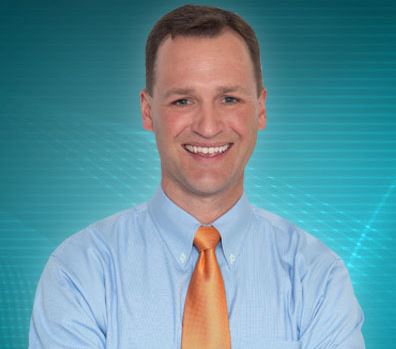Concierge Medicine Model Impacts Population Health Management
Patient satisfaction is much higher in the concierge medicine model.

- The concierge medicine model is becoming more and more prominent around the nation, as healthcare providers continue to adopt the new payment system. While many hospitals and physicians are finding medical payment reform and the move toward value-based care reimbursement challenging, the concierge medicine model may offer a solution to some of the struggles doctors are facing today.

The concierge medicine model allows physicians to spend more time with their patients while giving patients an annual membership fee instead of out-of-pocket costs associated with health insurance plans.
Physicians like Dr. Jim Williams, a primary care practitioner, find the concierge medicine model a great way to spend more time communicating with their patients and helping resolve problems in a timely manner among families and the sick. Patients can spend anywhere from half an hour to 90 minutes speaking to their primary care doctor in this environment, Williams explained.
The office staff is also able to have more time devoted to helping the patients since the primary care practice handles a much smaller volume of consumers on a day-to-day basis. Additionally, the concierge medicine model may be able to help doctors achieve the Triple Aim of Healthcare due to the fact that more time is devoted to each participant.
Patient satisfaction is much higher in the concierge medicine model, according to a survey released by Concierge Choice Physicians. The majority of those polled – 98 percent – stated that they are satisfied with the amount of patient-doctor communication available through concierge care.
“Patient satisfaction in concierge care is extremely high,” Wayne Lipton, Managing Partner at Concierge Choice Physicians, told RevCycleIntelligence.com. “Satisfaction in a program that is consumer-driven is measured in two ways – one, by surveys, two by participation rates. There are two different kinds of concierge – one is the full model and the other is the hybrid model.”
“In a full model program, about two-thirds of the patients who decided to become members joined simply because they don’t want to have to change their doctor,” Lipton continued. “The motivation is less about wanting the perks of the model and more about their satisfaction with their doctor, and not wanting to lose him.”
“In a hybrid approach to concierge, the choice to participate is much more pure, in that patients can elect to continue with their physician in the traditional model if they wanted to. Patients in a hybrid model join because they believe in the perks of the model. The percentage of patients who join a hybrid program is less than a full model program simply because the patients are not forced into it.”
“Concierge patients enjoy greater connectivity, more time, more convenience, more of a one-to-one mapping, and a bit more of an old-fashioned approach to healthcare in terms of the personal portion of the services,” he concluded.
Additionally, it is possible that doctor shortages throughout the country could be reduced if a concierge medicine model is implemented among more medical practices. Matt Jacobson, CEO of concierge practice SignatureMD, explains why.
“Concierge medicine's growth is being fueled by both physicians and patients. Physicians are fed up with assembly line medicine in which they get paid based on the number of patients they see per day,” Jacobson told RevCycleIntelligence.com. “Doctors want to practice good medicine instead of fast medicine. Similarly, patients do not want to feel like a number. They want to lock into a close relationship with a trusted physician who will do what's right for them instead of what's right according to the payer.”
Dr. Jim Williams offered more information about the concierge medicine model in an exclusive interview with HealthPayerIntelligence.com.
Physician job retention and doctor shortages
When asked whether concierge medicine improves physician job retention and reduces doctor shortages, Williams replied, “It’s not going to create new doctors, but it does keep physicians providing primary care. They’re more invested in where they work. They are less likely to leave. They are much closer and more connected to their patients. Therefore, the doctors tend to stay in place and the patients tend to get better connections to their doctor and better care.”
“What gets reduced are ER visits to urgent care with doctors who don’t know them and, therefore, order more tests. It certainly though makes the doctor less likely to change locations,” Williams clarified.
Healthcare payment reform and concierge medicine
When asked about the biggest problems of ongoing payment reform and whether concierge medicine solves these challenges, Williams answered, “Currently, physicians report increased dissatisfaction with all of the requirements of meeting meaningful use. Physicians and patients complain that the computer interrupts their communication and interrupts their time together.”
“The doctors have so many demands – computer and EMR-related demands. Physicians are very frustrated with this. They feel it gets in the way of their work. Concierge medicine does not get rid of the demands of meaningful use,” Williams explained. “It does give physicians much more time with their patients so that the part of the visit and the part of the doctor’s day that is devoted to computer work is much less of a percentage of the time when they’re with the patient.”
“Patients get much more meaningful face-to-face time with their doctor. This means better communication, which usually means less unnecessary testing and less testing that can be labeled as being extra careful or wasteful testing. It also means that doctors are more available when the patients call. Patients get in better and are referred to emergency rooms less often,” he mentioned.
Population health management and care coordination
When asked how concierge medicine affects population health management and care coordination, Williams explained that, “It greatly improves the quality of screening intervention and care coordination – meaning the physician and the patient have more time to discuss what screening tests, vaccinations, etcetera might be needed.”
“When the doctor has more time to talk to the patients about it, they’re more likely to go and get the screening test when referred,” continued Williams. “The culture of the concierge practice means that all staff members have more time to help patients navigate the healthcare system to get the care they need.”
“My receptionist has more time to help coordinate care. My nurse has more time. We are spread out across fewer patients and so, therefore, each patient’s needs get much more of our attention,” he stated.
Patient satisfaction with concierge care
When asked about the specific ways concierge medicine boosts patient engagement and satisfaction, Williams replied, “Patient satisfaction skyrockets in concierge medicine. My patients have access to me through email directly. They all have my cell phone number. Those who are able and willing can text message me appropriately for matters.”
“We don’t talk about detailed, private things, but we set up phone calls and the like through text messaging. They’re very connected to me. Furthermore, I make myself available to out-of-town visiting relatives of my patients.”
“When their grandparents, uncles or nieces or any other relative come in for a visit on a holiday get sick – they can get in with me. Things like this lead to great improvements in satisfaction. And my staff knows my patients so well.”
“When they call and they get the same person who knows them, remembers them and recognizes their voice, they feel like they’re calling a neighbor rather than an impersonal clinic where there are often a different employee each time you go. It’s without question a move toward greater patient satisfaction.”

